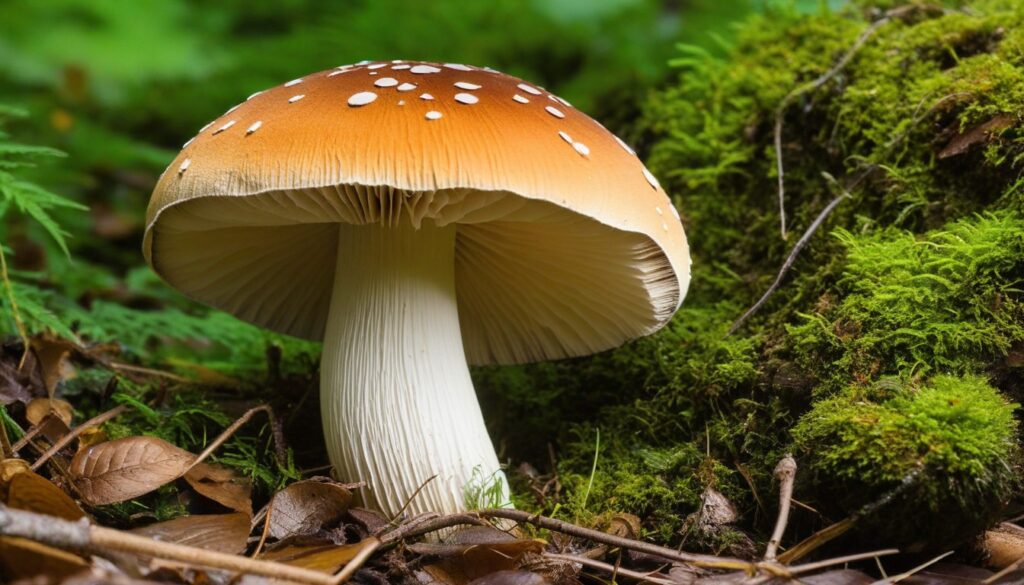If you’re an avid mushroom grower, you know how rewarding it is to see your hard work pay off with a bountiful harvest. But did you know that with the right techniques, you can achieve a second flush of mushrooms and increase your overall yield? In this comprehensive guide, we’ll reveal the secrets to unlocking a second flush of mushrooms, including techniques to optimize growing conditions and stimulate the mycelium.
Key Takeaways:
- Learn how to increase your mushroom harvest by achieving a second flush
- Discover the optimal growing conditions for mushrooms to maximize your chances of success
- Understand the importance of maintaining proper hygiene and sterilization to prevent contamination
- Explore methods for stimulating the mycelium to encourage further mushroom growth
- Find out how to extend the lifespan of your mushroom bed for continuous harvests
Understanding the Mushroom Life Cycle
Before discussing techniques for achieving a second flush of mushrooms, it’s crucial to understand the different stages of their life cycle. Mushrooms grow from tiny spores and progress through several stages, including:
- Inoculation: Spores are introduced to a growing medium and begin to develop into mycelium.
- Spawn Run: The mycelium colonizes the growing medium, forming an interconnected network of threads.
- Primordia Formation: Small clusters of mushroom pins known as primordia begin to develop.
- Fruiting Stage: The mushrooms mature and are ready for harvest.
The fruiting stage is the most crucial phase for achieving multiple flushes. During this stage, the mycelium has developed into a complex network that produces mushrooms. Proper care and maintenance during this phase can result in a second flush of mushrooms.
Understanding the different stages of the mushroom life cycle is essential for successful cultivation.
Mycelium also plays a crucial role in mushroom growth. It’s the vegetative part of the fungus that absorbs nutrients and water from the growing medium. Maintaining optimal mycelium growth is necessary for healthy mushroom development.
By understanding the mushroom life cycle, you can better identify the optimal time for harvesting and implement the necessary techniques for stimulating mycelium growth for a second flush.
Optimal Growing Conditions for Mushroom Cultivation
Creating the perfect environment for your mushrooms to thrive is crucial to getting a bountiful second flush. The following are the optimal growing conditions to maximize your yield:
|
Growing Condition |
Ideal Range |
|---|---|
|
Temperature |
60-70°F (15-21°C) |
|
Humidity |
85-95% |
|
Lighting |
12-14 hours of natural or artificial light per day |
A consistent temperature is essential for proper mycelium growth. Low temperatures can stall or slow down the process, while high temperatures can kill the mycelium. Maintaining high humidity levels will prevent the substrate from drying out and promote healthy growth. However, excessive moisture can cause contamination and mold growth, making it necessary to monitor humidity levels regularly.
Lighting is not essential to mushroom growth, but it can impact the quality and quantity of your yield. Natural light or artificial light with a blue spectrum can stimulate the mycelium’s growth and increase the number of mushrooms produced.
It’s important to note that different mushroom species may have slightly different growing conditions. Consulting specific resources for your chosen mushroom species is highly recommended.
Maintaining Proper Hygiene and Sterilization
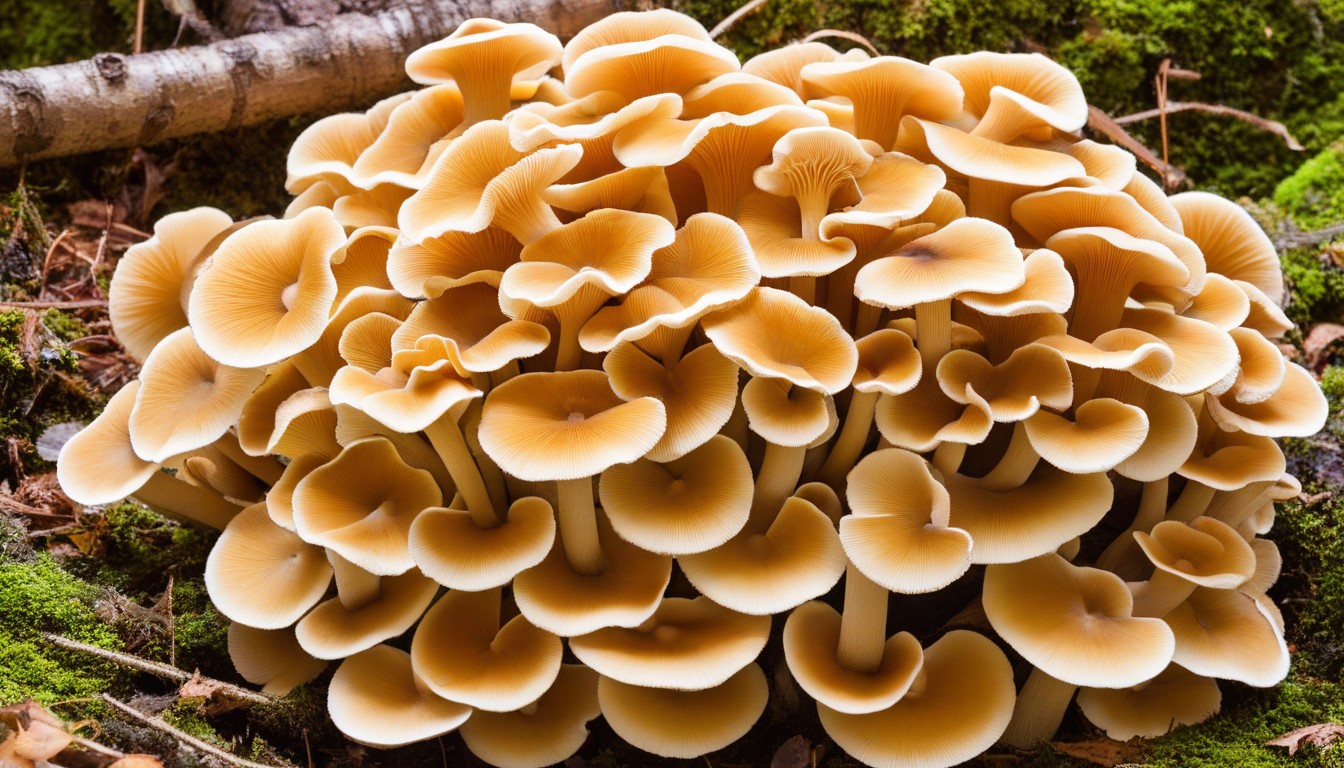
When it comes to mushroom cultivation, maintaining proper hygiene and sterilization practices is of utmost importance. Any contamination can quickly ruin your entire crop, preventing a second flush and resulting in a significant loss of time and effort.
To prevent contamination, start by cleaning all surfaces with a disinfectant solution and wearing protective clothing, such as gloves and a face mask. It’s also crucial to sterilize all equipment and tools before use.
Tip: To sterilize your tools, soak them in a 10% bleach solution for five minutes, then rinse with clean water and allow them to air dry.
A common source of contamination is the substrate, which is the material used to grow the mushrooms. To avoid contamination from the substrate, sterilize it thoroughly before use.
In addition to proper sterilization, ensuring proper humidity levels is essential in preventing contamination and promoting healthy mushroom growth. High humidity levels can increase the risk of contamination, so it’s vital to keep humidity between 80% and 90%.
Regularly monitoring your growing environment and maintaining cleanliness can go a long way in preventing contamination and promoting healthy mushroom growth.
Harvesting Techniques and Timing
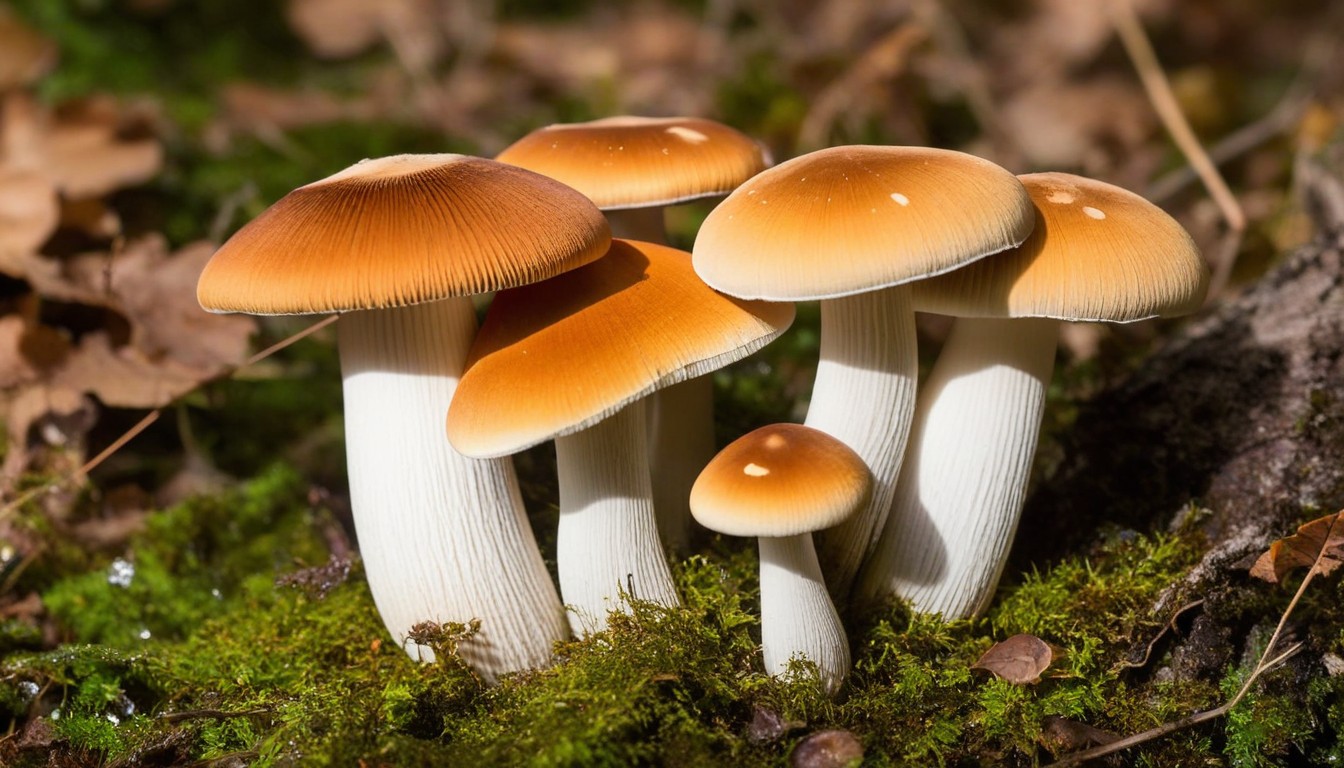
Harvesting mushrooms is a delicate process that requires timing and proper techniques to allow for a second flush. Mature mushrooms contain spores that can affect the quality of the next harvest, so it’s crucial to harvest them at the right time.
Timing
The best time to harvest your mushrooms is when the caps have fully opened, and the gills underneath them are visible. If the cap edges start to curl upwards, it’s an indication that the mushroom has ripened and is ready for harvest.
Harvesting mature mushrooms is essential before they start to release their spores, which can lower the quality of your next harvest. The ideal time to harvest mushrooms is when the veil underneath the cap is still intact, but the gills have fully opened.
Harvesting Techniques
When harvesting mushrooms, it’s essential to use proper techniques to avoid damaging the substrate or contaminating the growing environment. The best way to harvest mushrooms is by twisting the stem gently and pulling it upwards. Avoid using a knife to cut the mushrooms as it may damage the growing medium, leading to contamination.
It’s also crucial to handle the mushrooms delicately as they can bruise easily, reducing their quality and shelf life.
Stimulating the Mycelium for Second Flush
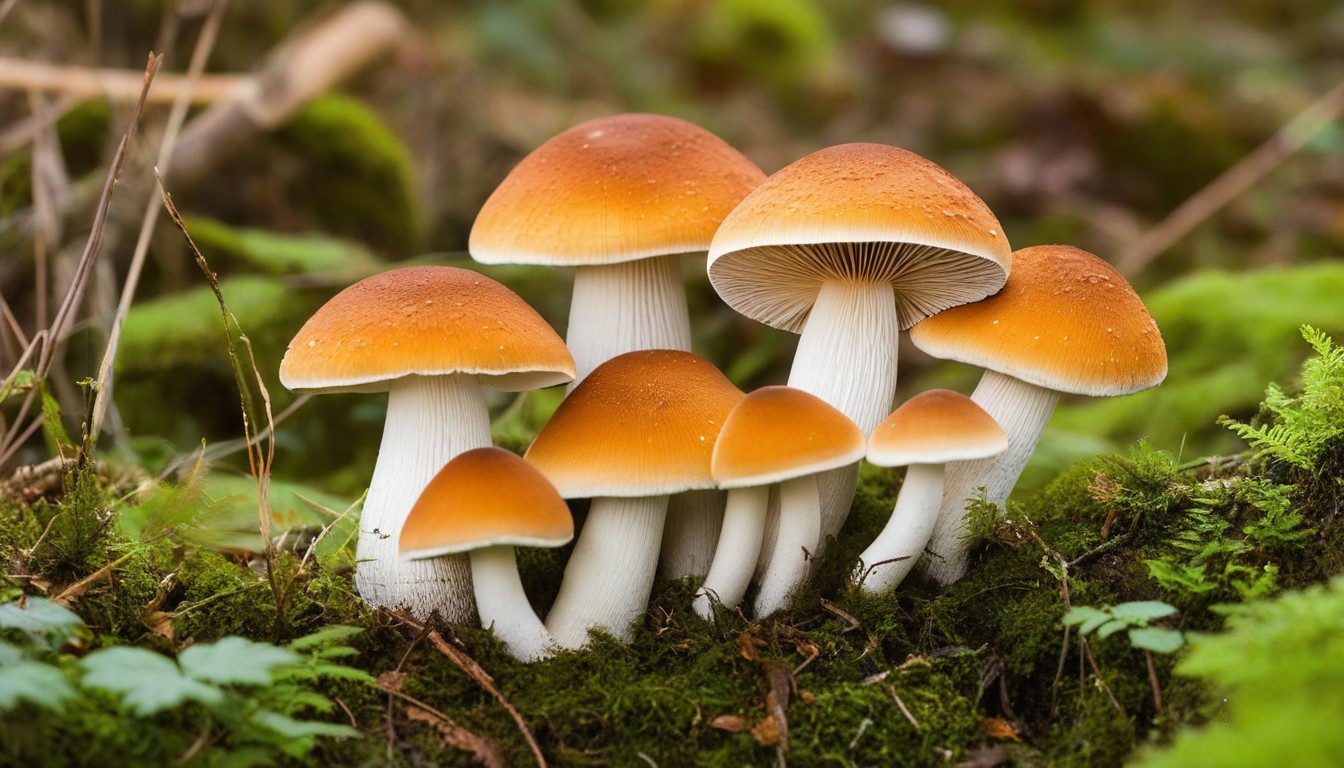
Encouraging mycelium growth is crucial to get a second flush of mushrooms. After harvesting the mature mushrooms, it’s essential to soak the substrate completely. This technique stimulates the mycelium, providing necessary moisture for further growth. Soaking the substrate for at least 12 hours is recommended, but avoid leaving it for more than 24 hours as it can increase the risk of contamination.
Misting the substrate is another technique that helps stimulate the mycelium. If the humidity level drops, misting the substrate will provide adequate moisture to encourage growth. It’s crucial to avoid over-misting the substrate and ensure that it remains damp, not soaked.
It’s essential to maintain proper hygiene while misting and soaking the substrate as any contamination can hinder mycelium growth and prevent a second flush. Wear gloves and use sterilized water for misting, and avoid touching the substrate unnecessarily.
Soaking Technique
Soaking the substrate is an effective method to encourage mycelium growth and promote a second flush. Here is a step-by-step guide to follow for optimal results:
|
Step |
Description |
|---|---|
|
1 |
Harvest all mature mushrooms from the substrate. |
|
2 |
Fill a container with enough water to submerge the substrate completely. |
|
3 |
Place the substrate in the container and ensure it is fully submerged. |
|
4 |
Cover the container and let it soak for at least 12 hours. |
|
5 |
Drain the excess water from the container and return the substrate to the growing area, ready for the second flush. |
Use the misting technique in combination with soaking for best results. Regular misting during the fruiting stage can promote the growth of a second flush. Keep a consistent misting schedule and avoid overdoing it as this can prevent mycelium growth.
Stimulating the mycelium is an essential technique to encourage a second flush of mushrooms. Soaking and misting the substrate are effective methods to promote mycelium growth and ensure a bountiful harvest.
Adjusting Environmental Conditions for Second Flush
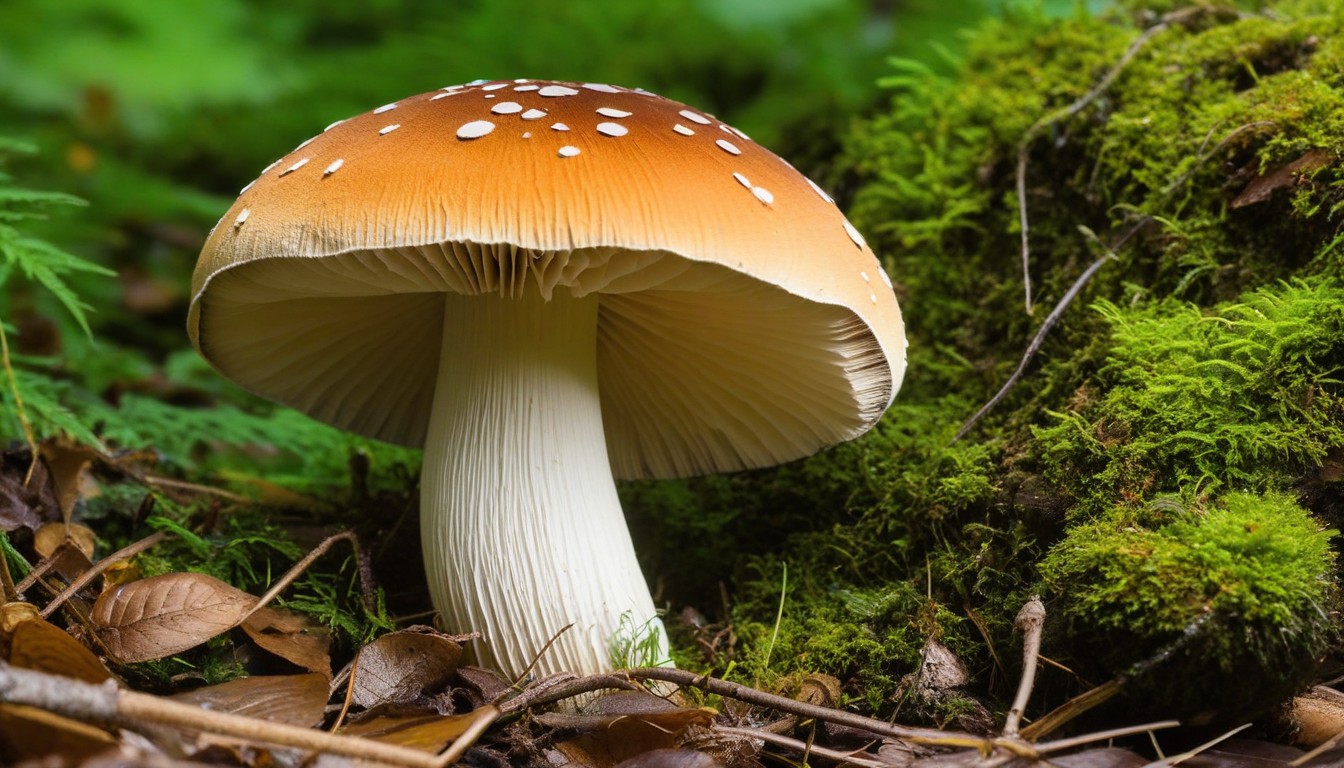
Getting a second flush of mushrooms heavily depends on creating and maintaining optimal environmental conditions. Adjusting the environment helps the mycelium recover from the first flush and initiate new mushroom growth.
Optimizing Fresh Air Exchange
Fresh air is essential for the growth and development of mushroom fruiting bodies. For optimal results, mushrooms require periodic fresh air exchange to replenish the oxygen level and remove carbon dioxide. You can improve the circulation of fresh air in your growing room by:
- Opening windows during favorable weather conditions
- Installing a fan to improve air circulation
- Using a vent to regulate air exchange and humidity levels
Control Humidity Level
Humidity is another important environmental factor that significantly affects the growth and development of mushrooms. High humidity levels can lead to the formation of mold and bacteria, while low humidity levels can cause drying and stunted growth.
Controlling the humidity level is crucial for promoting the second flush of mushrooms. Here are some effective ways to control humidity in your growing environment:
- Using a humidifier or fogger to increase humidity levels
- Using a dehumidifier to decrease humidity levels
- Keeping a tray of water in the growing room to provide ambient moisture
By optimizing fresh air exchange and controlling humidity levels, you can create an ideal growing environment for mushroom cultivation and increase your chances of getting a successful second flush.
Extending Mushroom Bed Lifespan
Proper substrate preparation and maintenance are vital to ensuring your mushroom bed’s longevity and getting multiple flushes. Here are some useful tips:
Substrate Preparation
- Choose quality substrate materials and avoid those that are already contaminated.
- Make sure the substrate is properly hydrated, and excess water is drained before use.
- Pasturize the substrate to kill off any harmful microorganisms.
- Ensure proper mixing of the substrate and spawn to achieve uniform colonization.
Maintenance
Once your mushroom bed is in place, proper maintenance is crucial to increase its lifespan and the potential for multiple flushes. Here are some tips:
- Monitor the temperature and humidity regularly to maintain optimal conditions.
- Provide adequate ventilation, and ensure proper air exchange to prevent the buildup of harmful gases and mold.
- Remove dead or contaminated mushrooms as soon as possible to prevent the spread of spores.
- Use clean equipment and practice good hygiene to avoid contamination.
By following these tips, you can extend the lifespan of your mushroom bed and increase your chances of getting multiple flushes.
Conclusion
Congratulations on reaching the end of this comprehensive guide on how to get a second flush of mushrooms! By applying the techniques and knowledge shared here, you can increase your chances of success and enjoy more of your favorite fungi.
Remember, understanding the mushroom life cycle, providing optimal growing conditions, maintaining proper hygiene and sterilization, using effective harvesting techniques, stimulating the mycelium, adjusting environmental conditions, and extending the mushroom bed’s lifespan are all crucial factors to consider when attempting to achieve a second flush.
With the right approach and a little bit of patience, you can enjoy an extended and abundant harvest of mushrooms. We hope this guide has been helpful and wish you all the best on your mushroom cultivation journey.
FAQ
Can I get multiple flushes of mushrooms?
Yes, it is possible to achieve multiple flushes of mushrooms with the right techniques and conditions.
How can I increase my mushroom harvest?
To increase your mushroom harvest, you can follow methods such as stimulating the mycelium, adjusting environmental conditions, and maintaining proper hygiene and sterilization.
What are the optimal growing conditions for mushroom cultivation?
The optimal growing conditions for mushroom cultivation include maintaining the right temperature, humidity levels, and proper lighting.
How do I harvest mushrooms for a second flush?
To harvest mushrooms for a second flush, it is important to pick them when they are mature but before they release spores. Using proper harvesting techniques and timing is crucial for maximizing your yield.
How can I stimulate the mycelium for a second flush?
Stimulating the mycelium for a second flush can be done through methods like soaking and misting to provide the necessary moisture and trigger further mushroom growth.
Are there any adjustments I can make to the environmental conditions for a second flush?
Yes, adjusting the environmental conditions by optimizing fresh air exchange and controlling humidity levels can promote the development of a second flush.
How can I extend the lifespan of my mushroom bed?
You can extend the lifespan of your mushroom bed by properly preparing the substrate and maintaining it to ensure a healthy growing environment.

